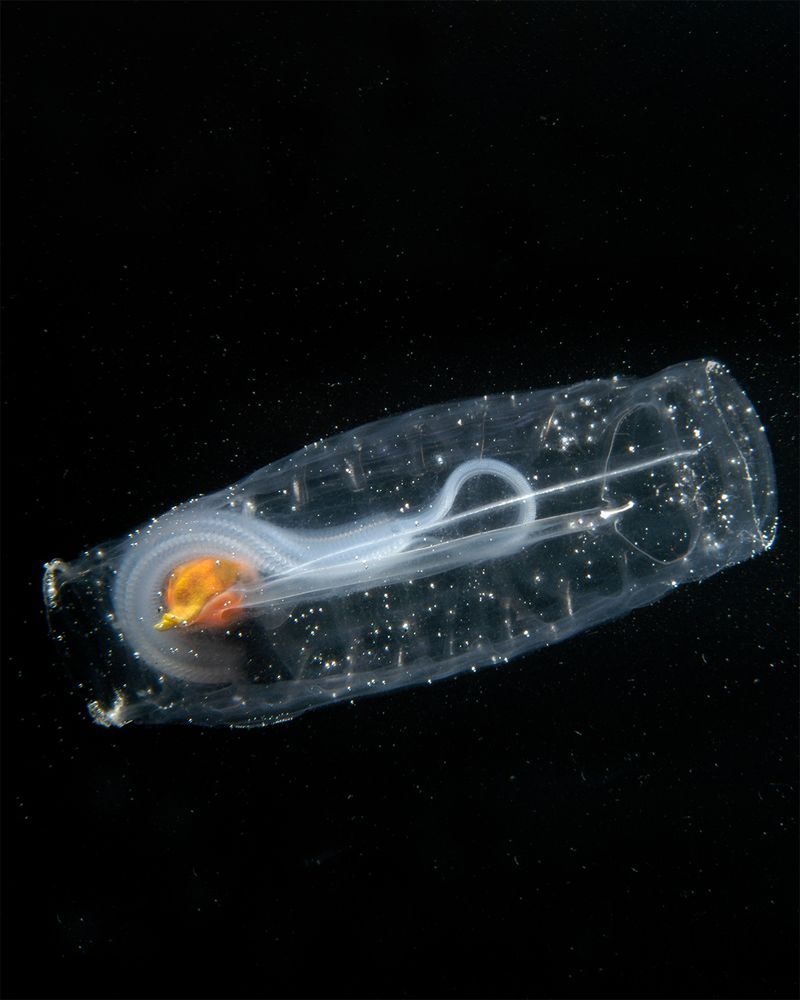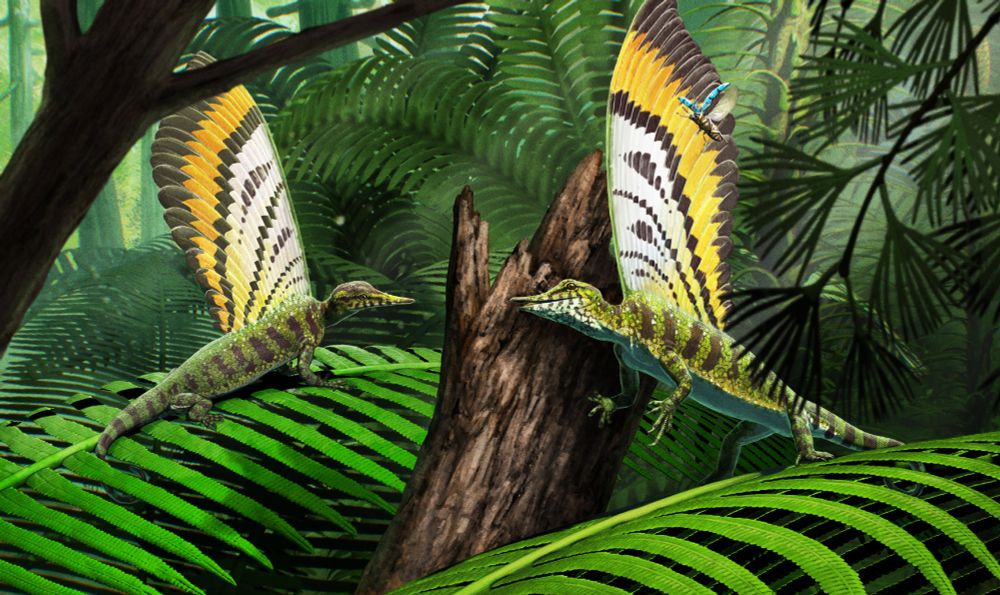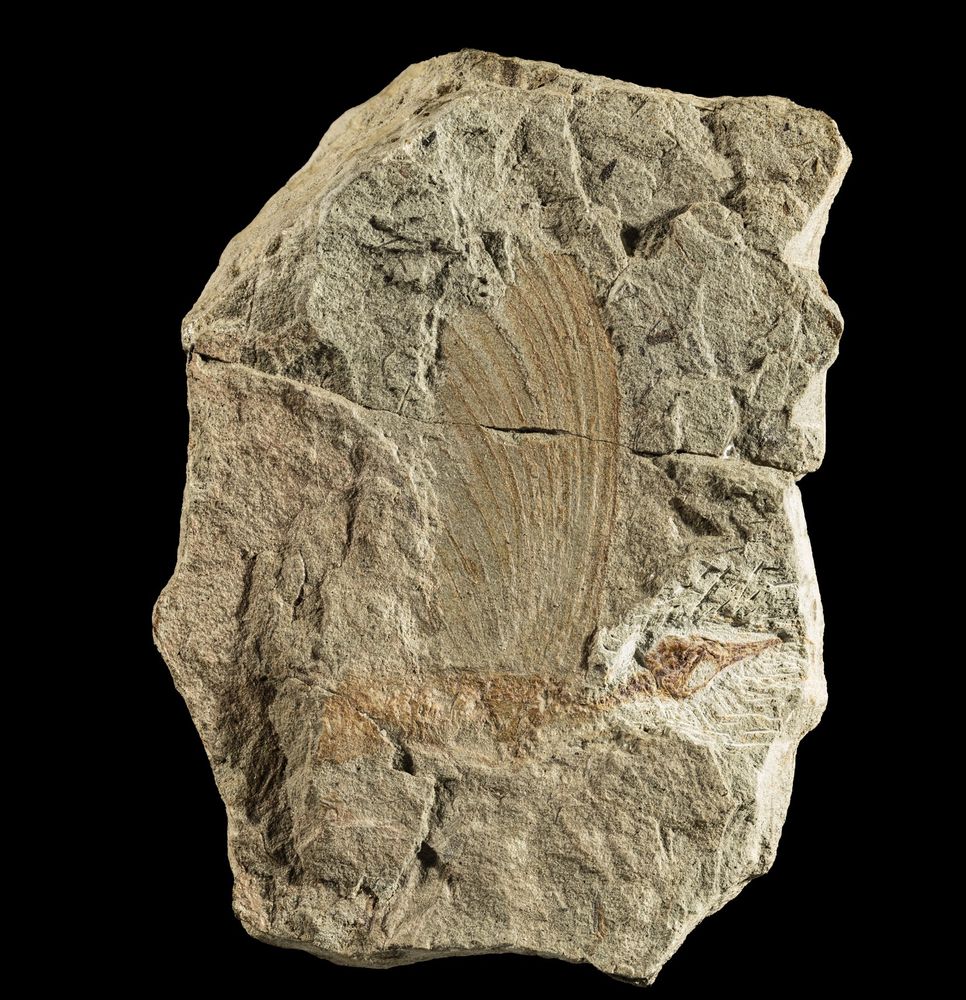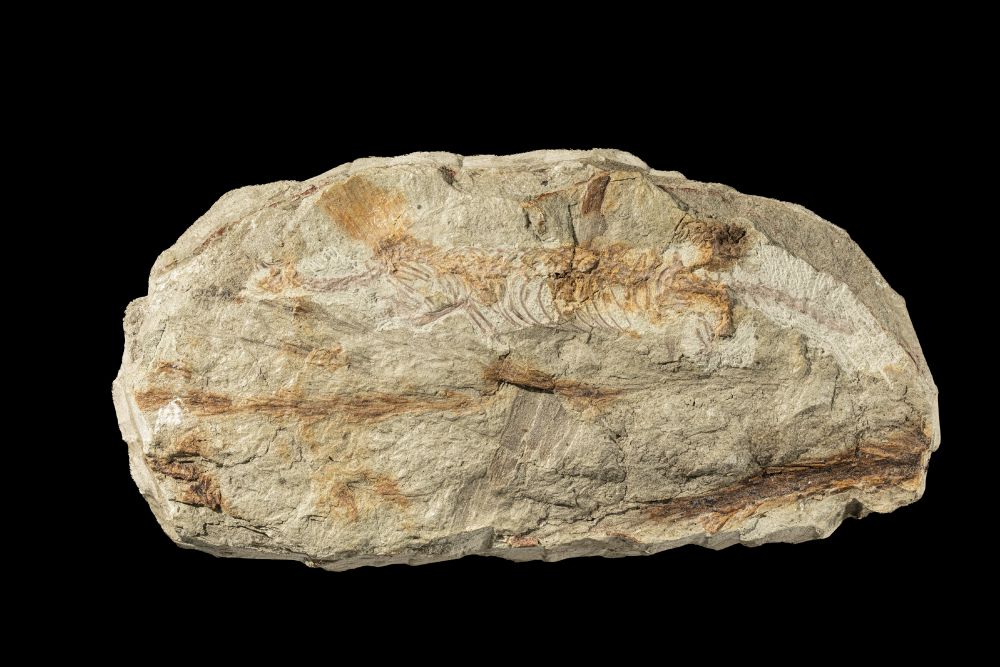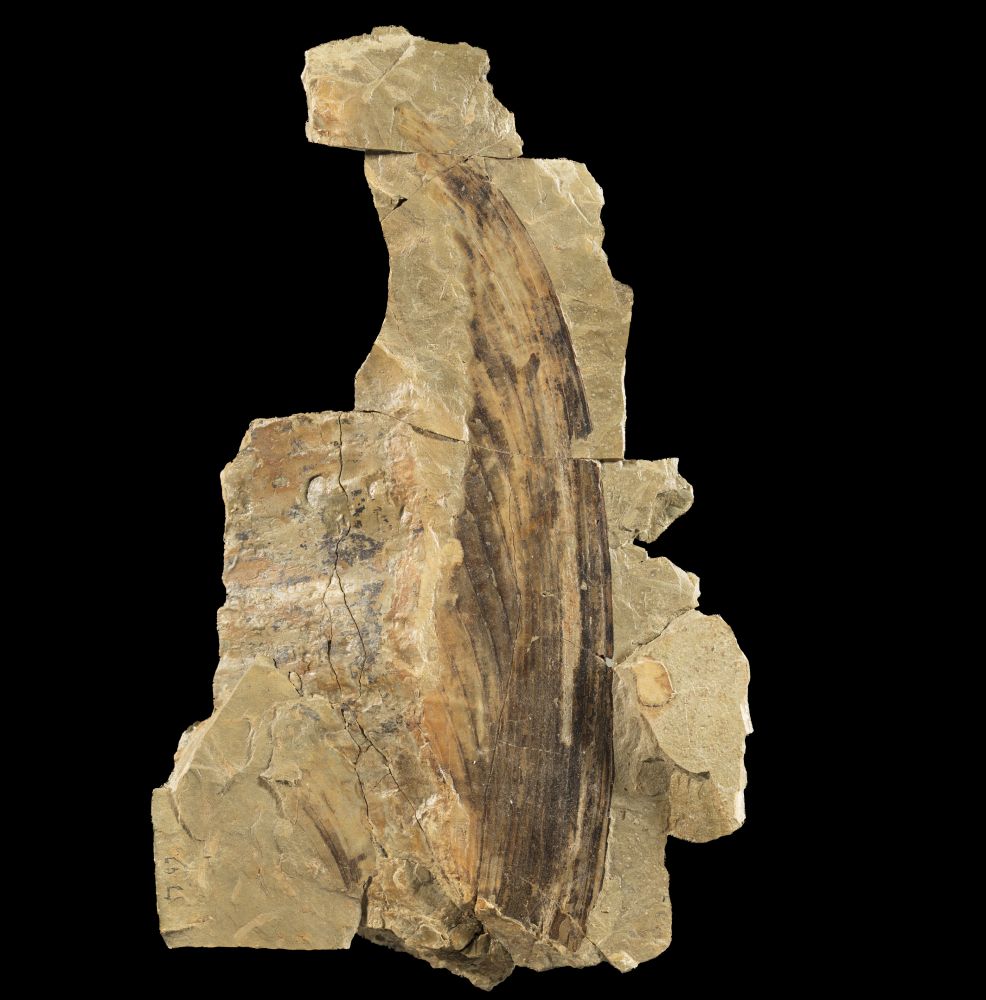

We are excited for the #PalAss meeting in Portsmouth this weekend
Some of the team will be there, including our EiC Dr Imran Rahman, so when you see our table, come and find out about the Journal of Systematic Palaeontology.. See you there!
@imranrahman.bsky.social #PalAss2025 #PaleoSky
12.12.2025 08:00 — 👍 6 🔁 3 💬 0 📌 1
Come chat to us about publishing in @journalsystpal.bsky.social this weekend at #PalAss2025
12.12.2025 08:26 — 👍 0 🔁 0 💬 0 📌 0

JSP Landmark Papers in Vertebrate Palaeontology
Explore the article collection: JSP Landmark Papers in Vertebrate Palaeontology. Published in Journal of Systematic Palaeontology.
Delighted to share our special collection of 24 landmark papers in vertebrate palaeontology published in @journalsystpal.bsky.social in the last 15 years, assembled to coincide with #SVP2025 #2025SVP. All these papers are free to access now and through November: www.tandfonline.com/journals/tjs...
30.10.2025 10:28 — 👍 11 🔁 10 💬 0 📌 0

JSP Landmark Papers in Vertebrate Palaeontology
Explore the article collection: JSP Landmark Papers in Vertebrate Palaeontology. Published in Journal of Systematic Palaeontology.
In honour of #2025SVP #SVP2025 in the UK, @journalsystpal.bsky.social has a special collection of landmark papers in vertebrate palaeontology. These papers have revolutionised our understanding of the systematics of major vertebrare groups, and are open access for Nov: share.google/1DIgZYMyjXUH...
29.10.2025 18:13 — 👍 39 🔁 14 💬 1 📌 0

An Interview with Imran Rahman & Susannah Maidment, Journal of Systematic Palaeontology
Join Imran Rahman and Susannah Maidment, Co-Editors of the Journal of Systematic Palaeontology, as they discuss the Natural History Museum's mission, cutting-edge research published in their journal,…
Listen to our Co-Editors-in-Chief, Imran Rahman and Susannah Maidment discuss the NHM's mission, cutting-edge research published in JSP, areas for future coverage—and, of course, their favourite dinosaurs. buff.ly/RbPLT3b @tweetisaurus.bsky.social @imranrahman.bsky.social @tandfresearch.bsky.social
28.10.2025 11:02 — 👍 18 🔁 9 💬 1 📌 0

New dinosaur species found in Portugal
A new 125-million-year-old iguanodon species has been revealed by palaeontologists, with the publication of the study on the discovery in the international Journal of Systematic Paleontology.
A new 125-million-year-old iguanodon species has been discovered: 𝘾𝙖𝙧𝙞𝙤𝙘𝙚𝙘𝙪𝙨 𝙗𝙤𝙘𝙖𝙜𝙚𝙞 🦖 a new basal hadrosauroid from the Lower Cretaceous of Portugal
buff.ly/Y92lRTR
Read the full study by Bertozzo et al. in JSP: buff.ly/FMnyy1m
#Dinosaurs #PaleoSky #NaturalHistory #NHM #JSP #Fossils
16.09.2025 14:58 — 👍 32 🔁 16 💬 0 📌 0

Browse all journals
Browse all journals
New Paper by Parry et al., reinterpreting the oldest diverse #jellyfish fauna as sessile polypoid dinomischids 🪼
These findings significantly expand the temporal and geographical range of dinomischids, elucidating their morphological and taphonomic variation.
buff.ly/ERV7P3C
#PaleoSky #Fossils
18.09.2025 09:47 — 👍 10 🔁 6 💬 0 📌 0

A new paper by Bertozzo et al. describes 𝘾𝙖𝙧𝙞𝙤𝙘𝙚𝙘𝙪𝙨 𝙗𝙤𝙘𝙖𝙜𝙚𝙞, a basal hadrosauroid from the Lower Cretaceous of Portugal 🦖 The most complete iguanodontian skull specimen found in Portugal, offers insights into cranial development and anatomy during hadrosauroid evolution: buff.ly/FMnyy1m #PaleoSky
15.09.2025 14:12 — 👍 32 🔁 13 💬 0 📌 3

Today new publication has been released in @journalsystpal.bsky.social
We are proud to present you Cariocecus bocagei, a new hadrosauroid from the Papo Seco Formation (Barremian, Early K) of Portugal.
Come with me in this post series to learn more about it! 1/x
15.09.2025 17:54 — 👍 108 🔁 39 💬 4 📌 1

Did you know we are one of two journals produced by the Natural History Museum London. We champion the importance of collections-based systematics and our papers cover fossil species from across the tree of life, substantially contributing to the systematics of extinct taxa. So, why publish with us?
04.09.2025 10:16 — 👍 17 🔁 9 💬 0 📌 0

a close up of a fly 's head with a blurred background .
ALT: a close up of a fly 's head with a blurred background .
🚨 Hiring! We are looking for a postdoctoral researcher with expertise in computational fluid dynamics and structural simulations to investigate biomechanics and mechanosensory feedback in insect flight.
Extreme agility ✔️
Morphological computing ✔️
Meshes! ✔️
jobs.rvc.ac.uk/vacancy.aspx...
02.09.2025 16:22 — 👍 14 🔁 15 💬 0 📌 2

New paper out in the Journal of Systematic Palaeontology 🦖 Investigating the phylogenetic relationships of Unenlagiidae among Paraves (Dinosauria) by M. Motta et al. (2025)
Read the full study here: buff.ly/0ytggCG
#Dinosaurs #Fossil #NHM #NaturalHistory #Biodiversity
26.08.2025 07:00 — 👍 21 🔁 9 💬 0 📌 1

Did you know.. Molluscs are the second most diverse phylum and possibly the most disparate! 🐚🦪🐌🐙🦑
A recent study by Karapunar et al. (2024) documents the phylogeny of Pleurotomariidae, the longest-living gastropod group, comparing different shell characters: buff.ly/2pEof6e @spissatella.bsky.social
27.08.2025 09:16 — 👍 23 🔁 12 💬 0 📌 1

Its #FossilFriday - check out the snout (lateral view) of 𝙋𝙨𝙚𝙪𝙙𝙝𝙚𝙨𝙥𝙚𝙧𝙤𝙨𝙪𝙘𝙝𝙪𝙨 𝙟𝙖𝙘𝙝𝙖𝙡𝙚𝙧𝙞, from the Los Colorados Formation (Norian), Argentina. This is the only specimen of one of the best known early non-crocodyliform crocodylomorphs.
Read more: buff.ly/h42ORcw #MindBlown #Fossils
29.08.2025 07:48 — 👍 11 🔁 4 💬 0 📌 0

Hi all, me, @richardjbutler.bsky.social and the amazing UK-US-Moroccan team are delighted to announce that.. we have a new specimen of Spicomellus AND IT'S WAY WEIRDER AND WAY COOLER THAN WE EVER IMAGINED!!
27.08.2025 15:20 — 👍 966 🔁 371 💬 33 📌 106

#FossilFriday 🦎 The right forelimb of 𝘾𝙖𝙡𝙖𝙣𝙜𝙪𝙗𝙖𝙣 𝙖𝙡𝙖𝙢𝙤𝙞 - a fossil lizard from the Early Cretaceous Crato Formation Brazil.
This specimen replaces the original 𝘊. 𝘢𝘭𝘢𝘮𝘰𝘪 holotype, which was lost in 2018 when a fire destroyed the National Museum of Brazil collections.
Read more: buff.ly/BCtn152
22.08.2025 07:00 — 👍 10 🔁 4 💬 0 📌 0

Meet our brilliant team of Associate Editors!
Dr Katie Collins is a molluscan palaeobiologist 🐚 specializing in bivalve macroevolution and the morphometrics of conchiferan molluscs.. and is a general measurement nerd!
Read more about her research: buff.ly/GDH0Obv
@spissatella.bsky.social #NHM
20.08.2025 07:00 — 👍 36 🔁 9 💬 0 📌 0


For #FossilFriday - the #skull of *Prosqualodon australis*, an #extinct relative of toothed whales like dolphins and porpoises, which was recovered from the Miocene of Argentina 🦴
Read the full article by Gaetán et al. (2025) in JSP: buff.ly/FkwovSK
#Dinosaurs #NaturalHistory #Systematics #NHM
15.08.2025 07:01 — 👍 21 🔁 11 💬 0 📌 0

Around this time in 1811, 12-year-old Mary Anning began excavating the first correctly identified ichthyosaur. Her brother found the skull and she uncovered the skeleton, later named a 𝘛𝘦𝘮𝘯𝘰𝘥𝘰𝘯𝘵𝘰𝘴𝘢𝘶𝘳𝘶𝘴
Read about the phylogeny of ichthyosaurs by B.C. Moon (2017): buff.ly/4IC8Cz8
#NaturalHistory
13.08.2025 11:21 — 👍 14 🔁 5 💬 0 📌 0

A new study in JSP reports the first record of 𝘗𝘭𝘪𝘰𝘵𝘳𝘢𝘨𝘶𝘴 (Bovidae) from the Early Pleistocene of eastern Asia. Phylogenetic results place it within Caprini, alongside modern goats, sheep and muskoxen. Read the full study by Bai et al. (2025): buff.ly/UmeXcHQ
11.08.2025 10:59 — 👍 10 🔁 4 💬 0 📌 0

🦕 Did you know…
By the time 𝙏𝙮𝙧𝙖𝙣𝙣𝙤𝙨𝙖𝙪𝙧𝙪𝙨 𝙧𝙚𝙭 roamed the Earth, 𝙎𝙩𝙚𝙜𝙤𝙨𝙖𝙪𝙧𝙪𝙨 was already a fossil as it had been extinct for over 80 million years!
Read about the phylogeny of Stegosauria by Maidment et al. (2008): buff.ly/sxw3Qbx
@tweetisaurus.bsky.social #fossils #funfact #MindBlown #PaleoSky
06.08.2025 07:01 — 👍 17 🔁 7 💬 0 📌 0
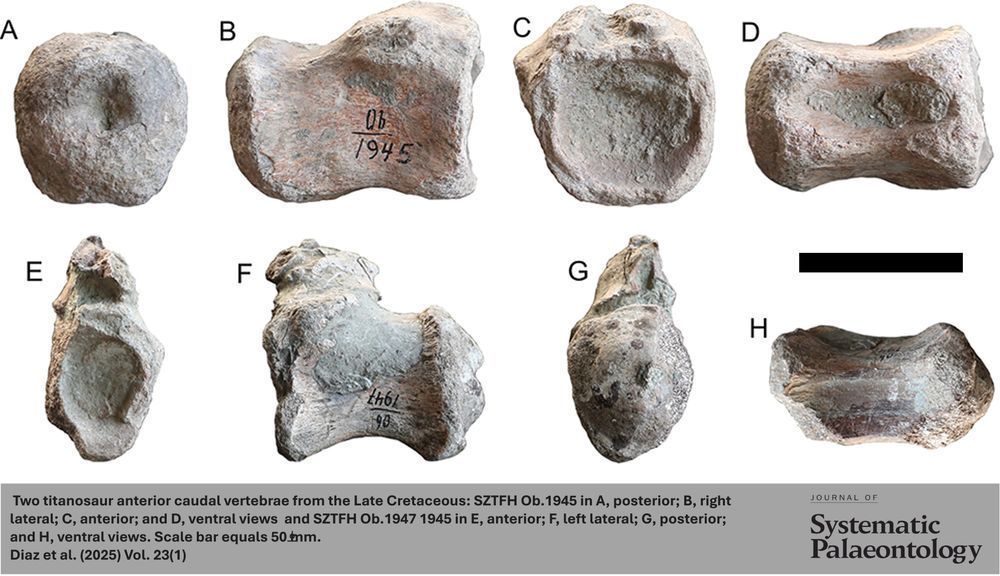
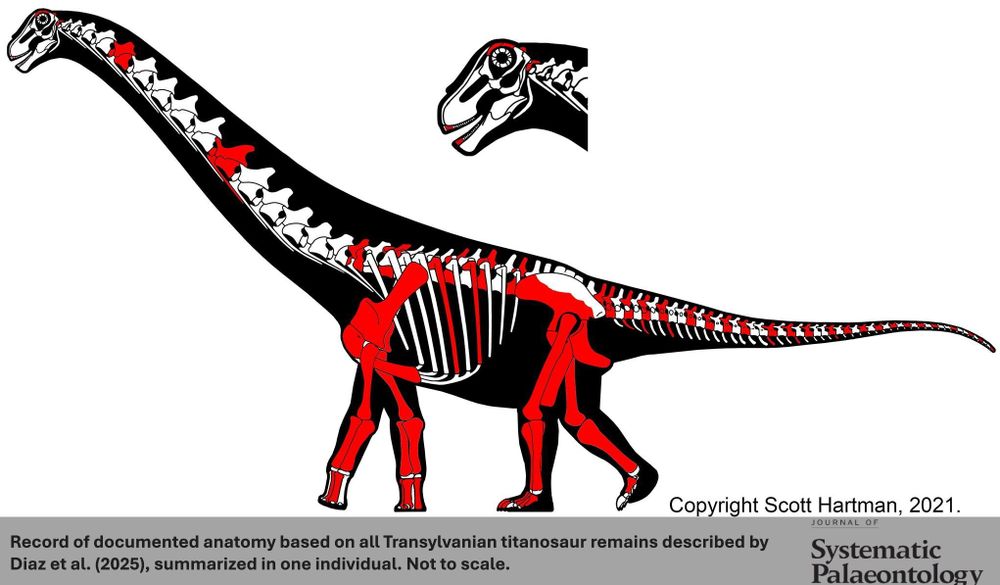
For #FossilFriday have a look at the Late Cretaceous vertebrate remains of a Transylvanian Titanosaur and an anatomical record of the remains described by Diaz et al. (2025) in JSP.
Read the full study here: buff.ly/0eDwNJI
#PaleoSky #NHM #Dinosaur #Fossils #NaturalHistory #Giant #JSP #MindBlown
01.08.2025 07:00 — 👍 23 🔁 10 💬 0 📌 1
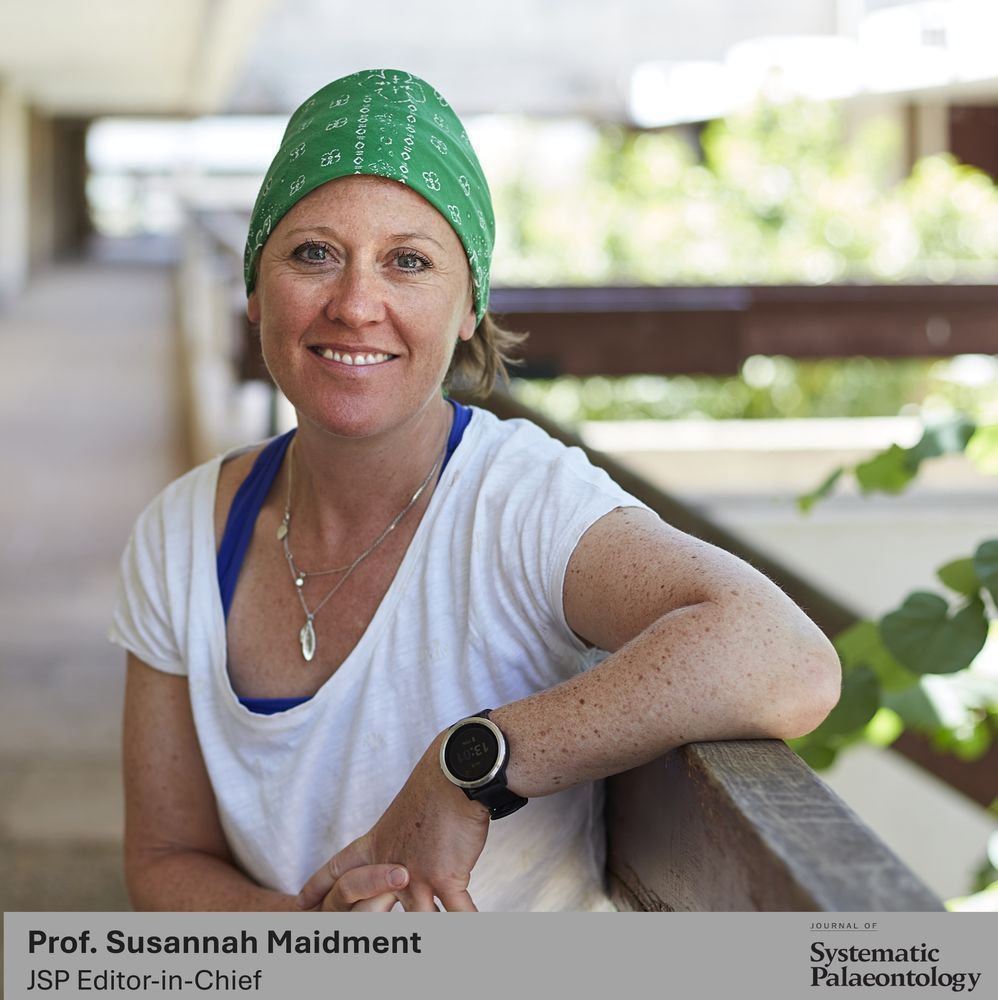
Prof. Susannah Maidment JSP Editor-in-Chief
Welcome to our new co-Editor-in-Chief Prof. Susannah Maidment
Susannah is a renowned expert on the palaeobiology of bird-hipped ‘ornithischian’ dinosaurs at the Natural History Museum, London
🦕Read about her amazing work: buff.ly/4AfhohB
@tweetisaurus.bsky.social #Fossils #PaleoSky #Dinosaurs
30.07.2025 07:01 — 👍 38 🔁 11 💬 0 📌 1
This is why giraffes are never known to have played soccer.
25.07.2025 07:05 — 👍 5 🔁 3 💬 1 📌 0
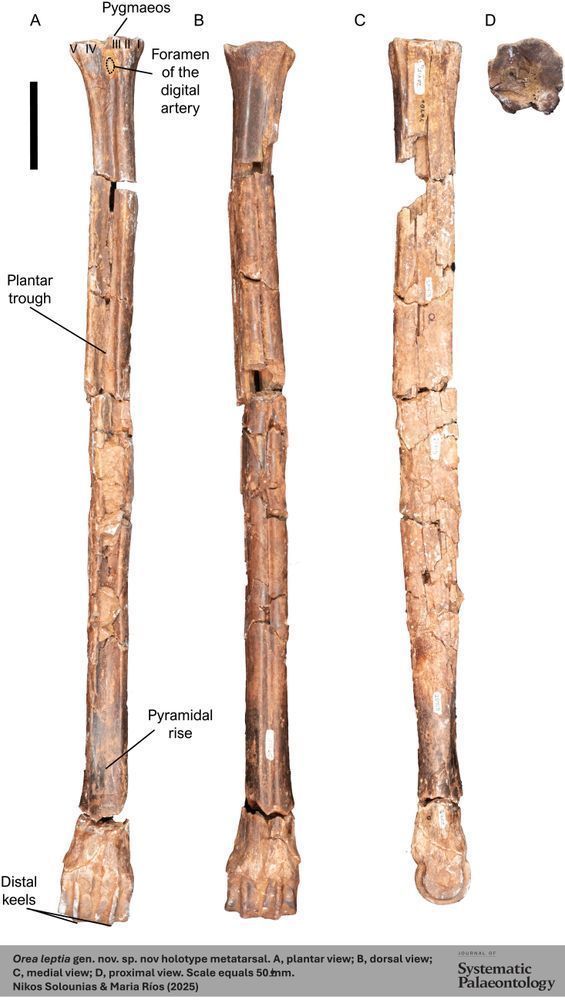
𝘖𝘳𝘦𝘢 𝘭𝘦𝘱𝘵𝘪𝘢 - An extinct Giraffid species from the Middle Miocene Chinji Formation of Pakistan, with the slenderest metatarsal of any known ruminants, represents the oldest definitive member of the giraffine lineage. Nikos Solounias & Maria Ríos (2025): buff.ly/LqW97Ky
#FossilFriday #PaleoSky #NHM
25.07.2025 07:01 — 👍 34 🔁 10 💬 0 📌 2
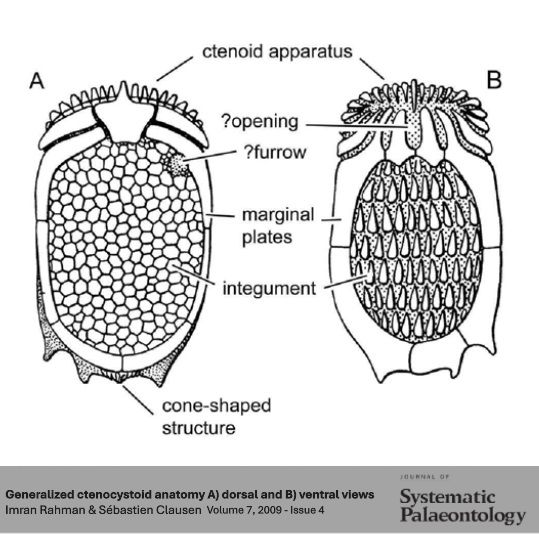
🌟Did you know..?
While modern echinoderms like starfish have five-fold symmetry, the fossils of extinct echinoderms exhibit very different types of symmetry!
Read about the 3D reconstruction of ctenocystoids, Rahmen and Clausen (2009): buff.ly/xN07qjx
@imranrahman.bsky.social #fossils #PaleoSky
23.07.2025 07:01 — 👍 15 🔁 5 💬 0 📌 0
Palaeobiologist. MSCA Postdoctoral Fellow @University of Birmingham. My research covers Taphonomy, Dinosaur Colour, and Evolution of flight. Now developing AI deep learning pipelines to automate 3D segmentation of CT-scanned fossils.
Research leader @NHM | Animal evolution | phylogenomics | molecular evolution
Professor of Palaeontology at University College Cork. Likes fossils, the lab, fieldwork. Passionate about public engagement. Runs and climbs.
Palaeontologist, invertebrate botherer. PhD student at the University of Bristol. Interested in the evolution of Ecdysozoa. Mainly working on worm fossils from the Cambrian Sirius Passet Lagerstätte.
GWIS | MorphoBank | Historical Biology | SORTEE | SSB | EcoEvoRxiv
PhD student at uni of Edinburgh⛏️🦕 | Researching ichthyosaurs🐬🦎 | Crocheter and knitter🧶 | she/her
PhD #EvolutionaryBiology, #Systematics #Ecology #Paleobotany, #ClimateChange, #Stomata, #Microscopy, #Pollination #Conservationbiology, #Conifers #Seeds🌲🧬
News and information from the European Commission. Social media and data protection policy: http://europa.eu/!MnfFmT
Palaebiologist | Paläobiologin |
Research | Forschung @kieluni 🇩🇪🇪🇺
#Palaeontology #Zoology #Evolution #Anatomy #Vertebrae #Archosaurs 🐊🐦🐀 @BoehmerGroup
Senior lecturer (Assoc. Prof.) at University of Liverpool, Evolutionary Morphology & Biomechanics (EMB) research group 💀Mostly cranial form & function in mammals 🐇🐀🦇🐒🦍🐘🦒🦬🦏
🔗 @livevobiomech.bsky.social
I work on the hydrodynamics of plants and their environment, the role of drought in plant evolution.
Jun. Prof. of Plant Ecophysiology
University of Hohenheim
Institute of Botany, Czech Academy of Sciences
He/him/his
Entomology, paleontology, evolutionary ecology, science communication | currently a postdoctoral fellow at the Okinawa Institute of Science and Technology
An international Zoological journal covering systematic & evolutionary research from species both alive and extinct 🐆🦋🪲🦇🦕
Homepage: https://academic.oup.com/zoolinnean
Blog: https://www.linnean.org/news/categories/the-paper-trail
From dinosaurs to volcanoes, we engage all ages & backgrounds with 4.6 billion years of Earth history and evolution 🌋🦕
News from the Department of Zoology at the University of Cambridge
https://www.zoo.cam.ac.uk/
morphobank.org A web application for collaborative evolutionary research in tree-of-life, phylogenetic systematics or cladistics on the phenotype. #ecology #evolutionarybiology #biology #archaeology
Part of @phoenixbio.bsky.social
🌿 Connaître et préserver la Terre et le vivant
Centre de recherche et d’enseignement, conservatoire de la biodiversité, le Muséum se déploie sur 12 musées, jardins et zoos en France.
S’abonner 👉 mnhn.fr/la-newsletter-du-museum-sur-la-terre-et-le-vivant
Natural History Museums' Network.
Empowering #Taxonomy, at the heart of the decision-making process.
www.cetaf.org
Advancing knowledge and understanding of paleontology and life’s evolution through research, education, and advocacy. Supporting and championing a diversity of voices.
https://www.paleosoc.org











